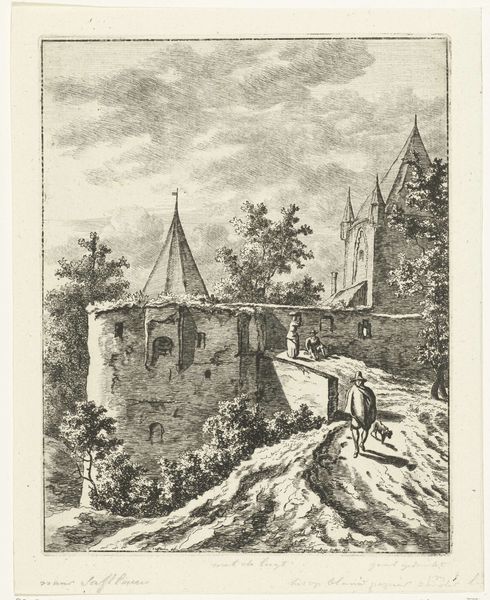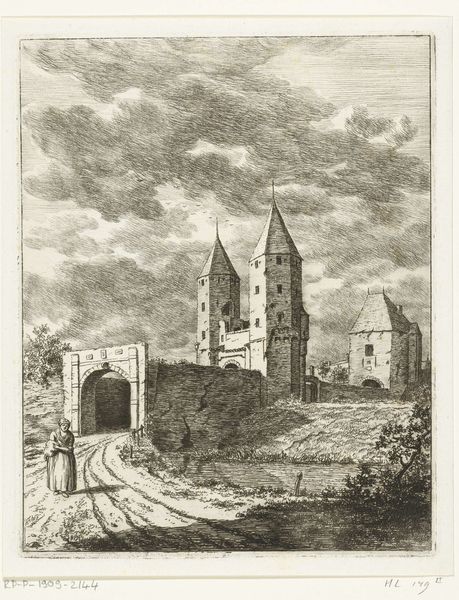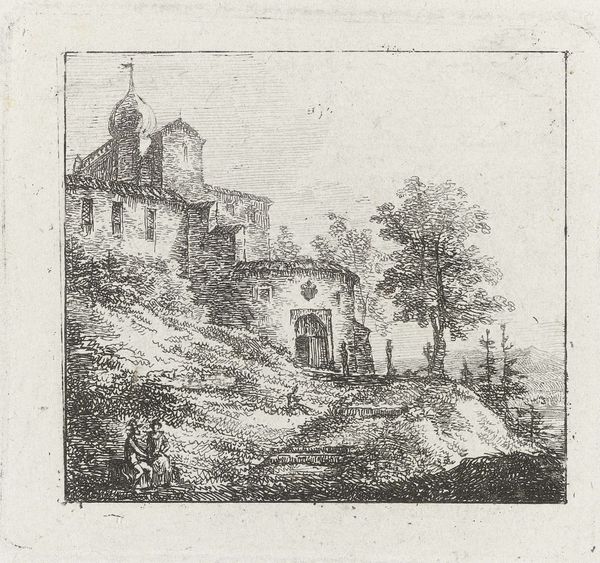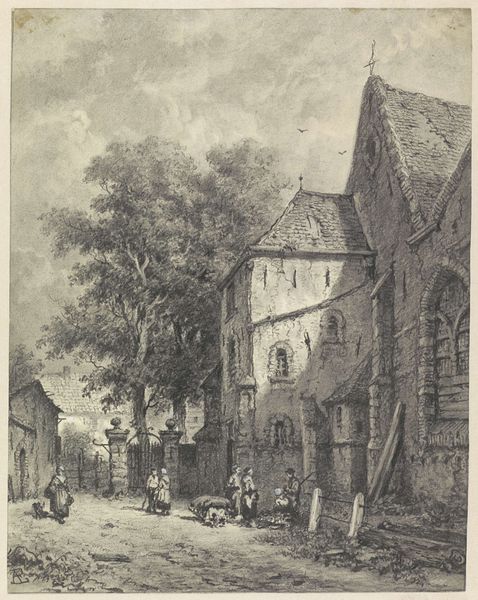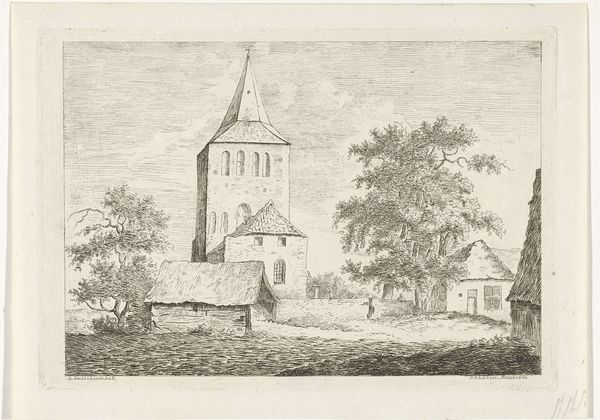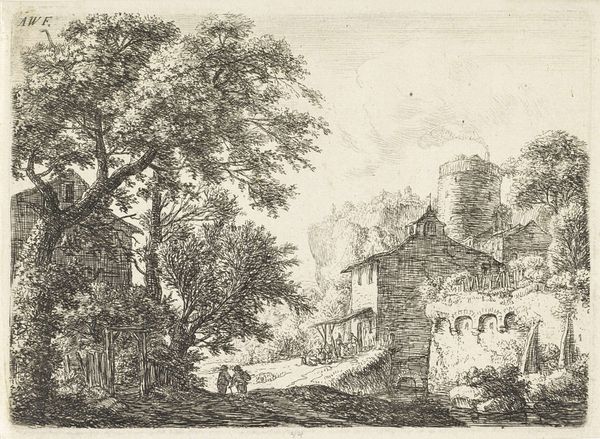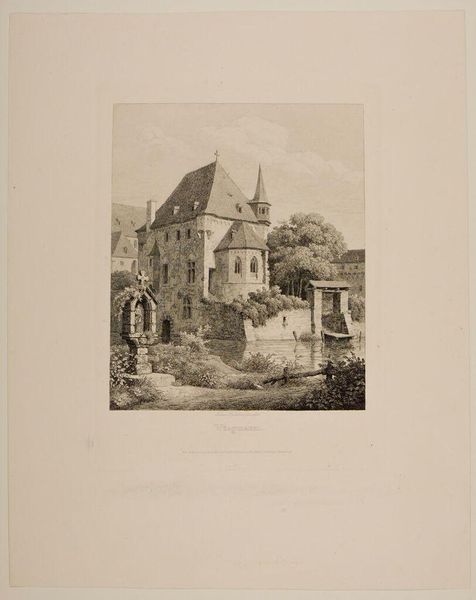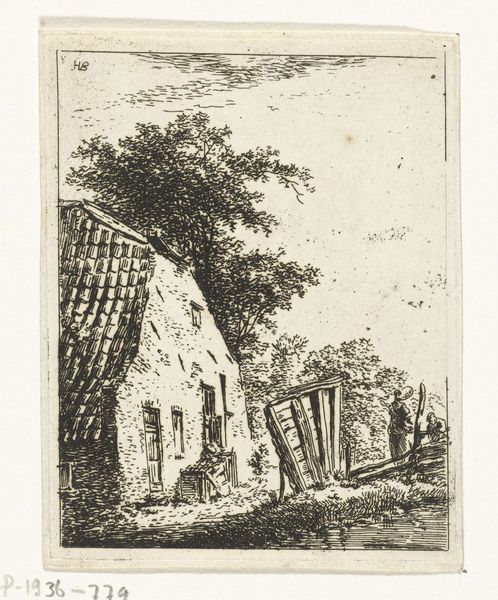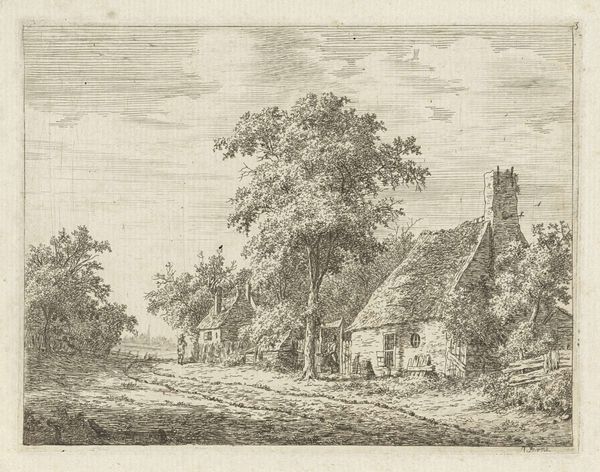
print, engraving
# print
#
old engraving style
#
landscape
#
romanticism
#
cityscape
#
engraving
Dimensions: height 165 mm, width 113 mm
Copyright: Rijks Museum: Open Domain
Editor: So, here we have Domenico Quaglio's "View of a Church in a Wooded Landscape," an engraving from around 1808 to 1821. It feels both peaceful and a little imposing, with the church tower looming over the trees. How do you interpret this work, especially considering its historical context? Curator: That’s a great starting point. It's vital to consider what a church represented in the early 19th century. It wasn't merely a place of worship; it was a locus of power, community, and often, oppression. This work participates in Romanticism’s recuperation of nature against social institutions and their control over everyday life. Quaglio offers an ambivalent position, however: while trees dominate the image’s lower registers, we are also acutely aware of the church’s imposition on the landscape. It's about power relations, both seen and unseen. What feelings does the architecture of power trigger here? Editor: I hadn’t really thought of the church as an assertion of power in this scene. It seems at first glance to be picturesque, like something you’d find on a postcard. But your points make me consider who this "picturesque" scene is *for*. Were there power dynamics at play in who was able to access or represent this kind of imagery? Curator: Exactly! Who is this idyllic scene intended for? Landscape art was often consumed by the burgeoning middle class, eager to display their access to land, leisure, and the arts. It served as a subtle performance of their socio-economic standing. What about the choice to use engraving specifically, do you see anything to unpack there? Editor: That’s interesting. Well, engravings can create a sense of meticulous detail, perhaps suggesting an attempt to document or even control the landscape. And because it is printmaking, it invites a reproducibility, speaking again to its possible use as propaganda for the wealthy? Curator: Precisely. Considering the art's date, the rise of industrialization and its impact on society and how people started thinking about power dynamics, we start to view this seemingly harmless church scene through a very different lens. Editor: This makes me want to dig a little deeper into the landscape genre itself. I had never thought of it as a genre intertwined with class and power! Curator: Absolutely! And that's the beauty of contextualizing art; it constantly challenges our assumptions.
Comments
No comments
Be the first to comment and join the conversation on the ultimate creative platform.
